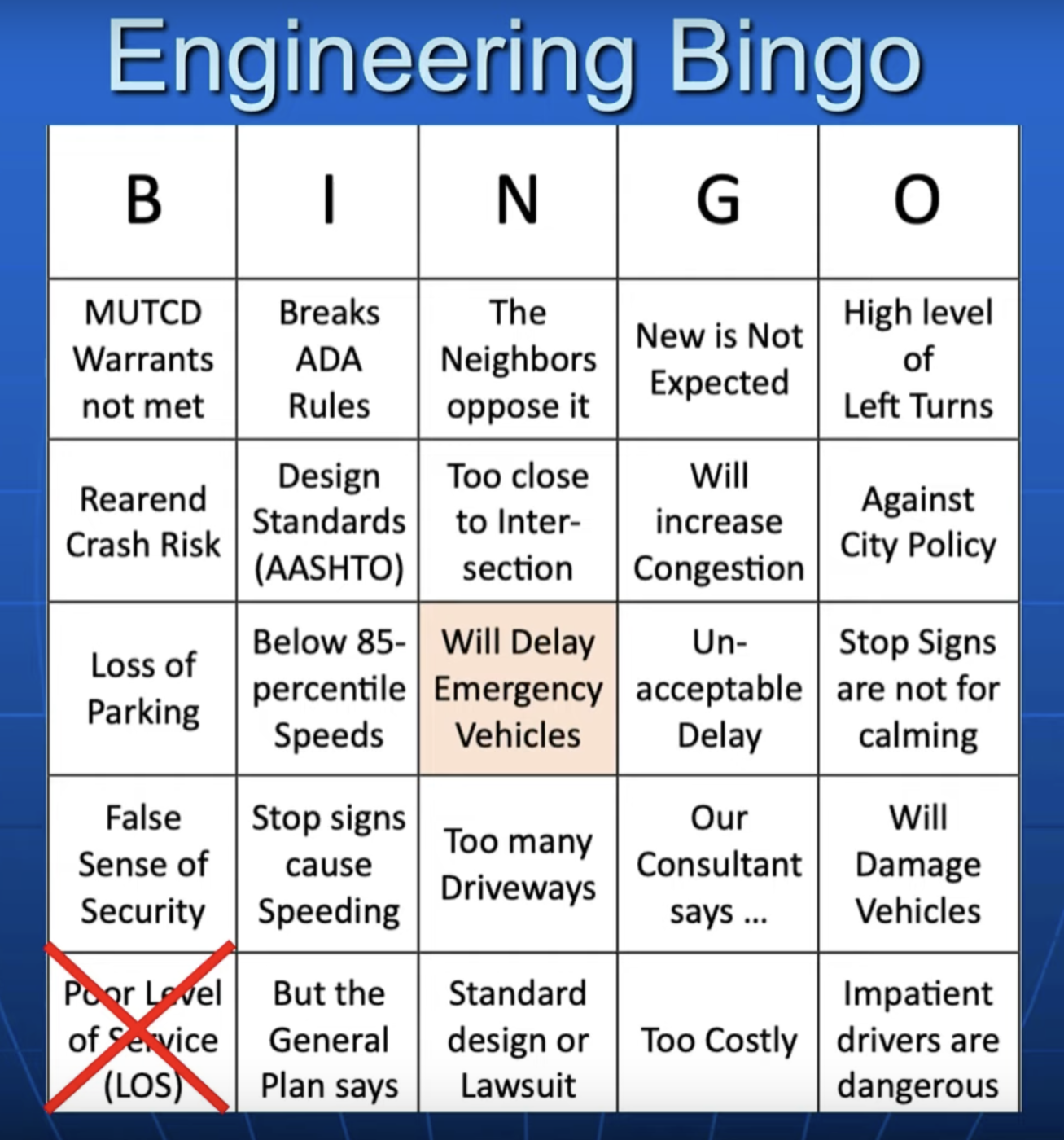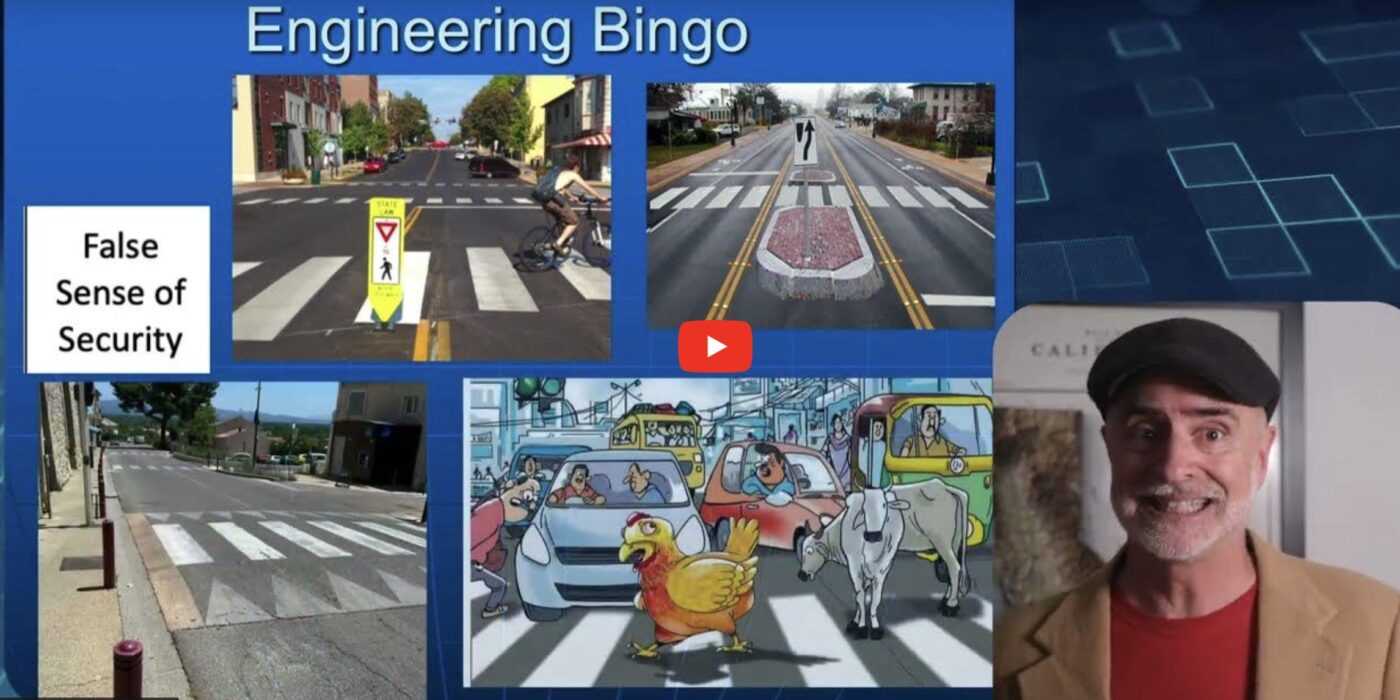Have you seen it yet? The Engineering Bingo Card video by Buff Brown that’s been making the transportation advocacy rounds this past few days? Brown is a transportation planner, engineer, bicycle advocate — and now a rapper. He’s not bad either, really! His bingo card rap is a wicked package of the most common excuses every safety advocate hears about why their [crosswalk, speed bump, sidewalk, bike lane, signal] can’t be approved. Enjoy!
OK, that’s the video, now to blow off a little steam. Many Portland transportation advocates have a folder of rejections they’ve received over the years from PBOT engineers, planners, and staff. Call them our rejection collections. We pass them around, talk about them way past their shelf life and generally obsess about them.
Here’s my tale of the rejection I can’t let go, one weird enough it doesn’t make Buff’s bingo card.

A few years back, me and my buddy noticed that the flashing school-zone light across from Ainsworth Elementary School, in Portland Heights, was poorly located. Weren’t these warning lights supposed to precede the school? So we went to work — documented the problem; found a more appropriate pole uphill on SW Vista; wrote a 3-page PDF describing the situation and solution; sent it off to PBOT … and waited, and waited, and waited.
Finally after three months, I got hold of the traffic investigator assigned to us and got my rejection. The reason? The pole where we wanted to relocate the flashing light was uphill from the school, at an elevation above the grade of the school-yard, which disqualified it as a location. (Streets on hills are like that.)
Ba-da-boom.
Yeah, it’s a head-scratcher. I ruminate on it in my idle moments. All I’ve been able to come up with is a situation where a school was bounded by a road at a different elevation from the local roads, such that the elevated road didn’t intersect locally. But that’s not the case with Ainsworth or its annex. You get to both by Vista. Anyone with a lick of sense could see that one of its two flashing lights needed to be placed on the approach from the south.
It all worked out in the end. After a years-long hiatus due to exasperation, I was coaxed into picking up the project again. The Safe Routes to School people came in and did a lot of traffic calming, they were wonderful. A new vice-principal with a fire-in-her-belly about safety became an ally. And now, young children can walk to school a little more safely because the flashing beacon alerting drivers to their presence is appropriately placed at the approach to the school, not directly across the street from it.
But it took five years, a few experienced advocates, two rejections by engineer-types, and a motivated vice-principal to make it happen. At least that’s how I remember it.
What’s your story?




